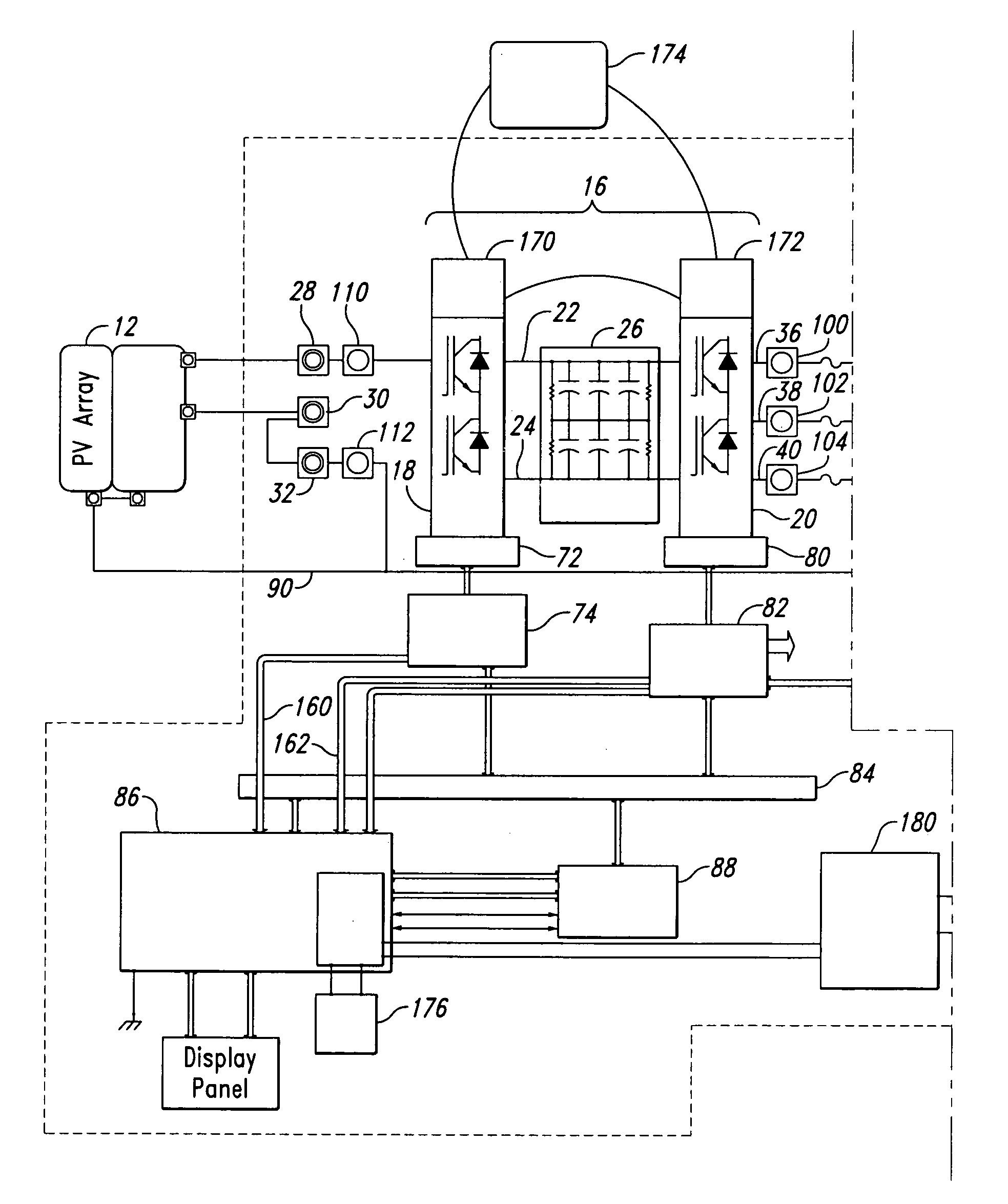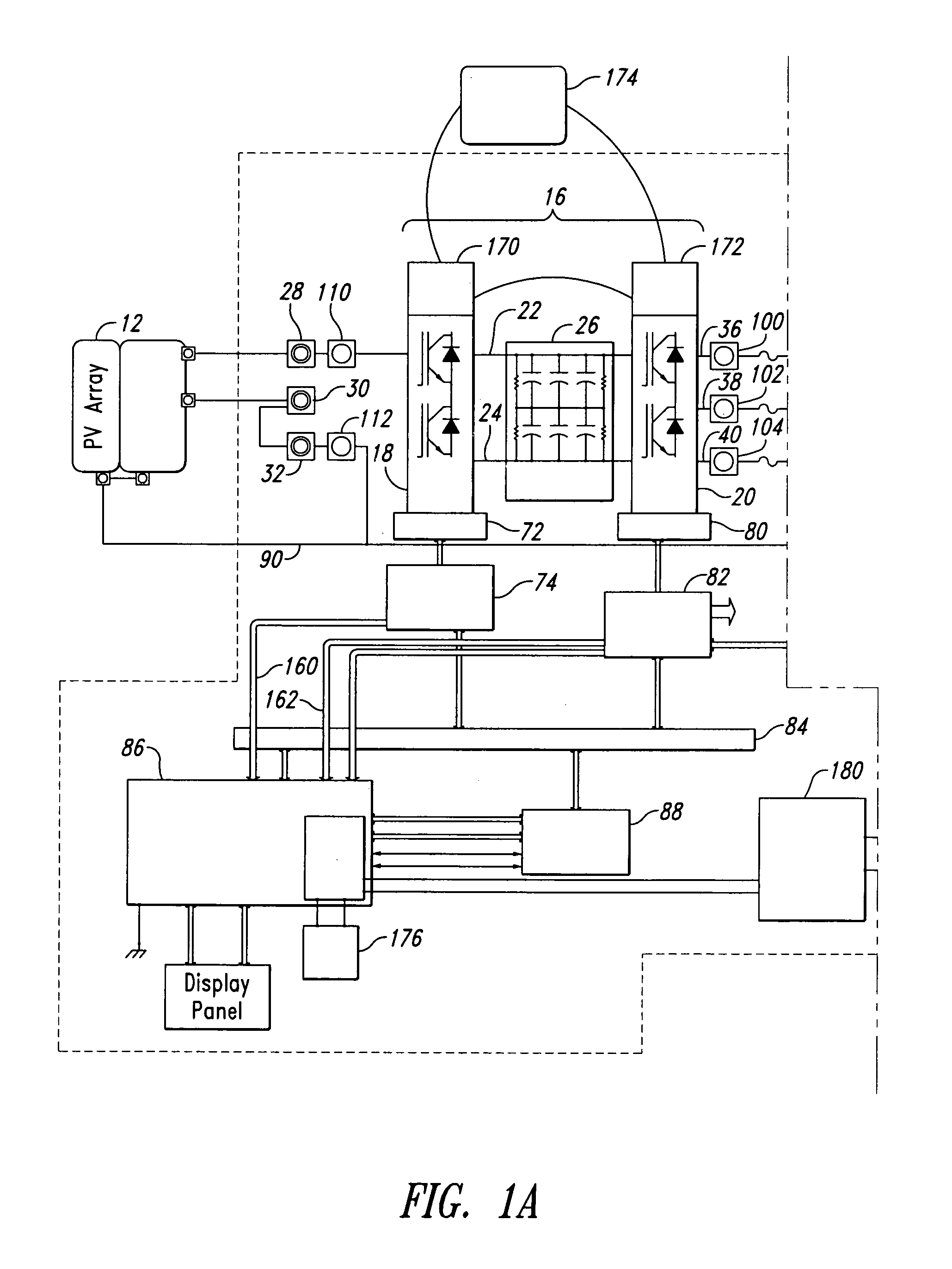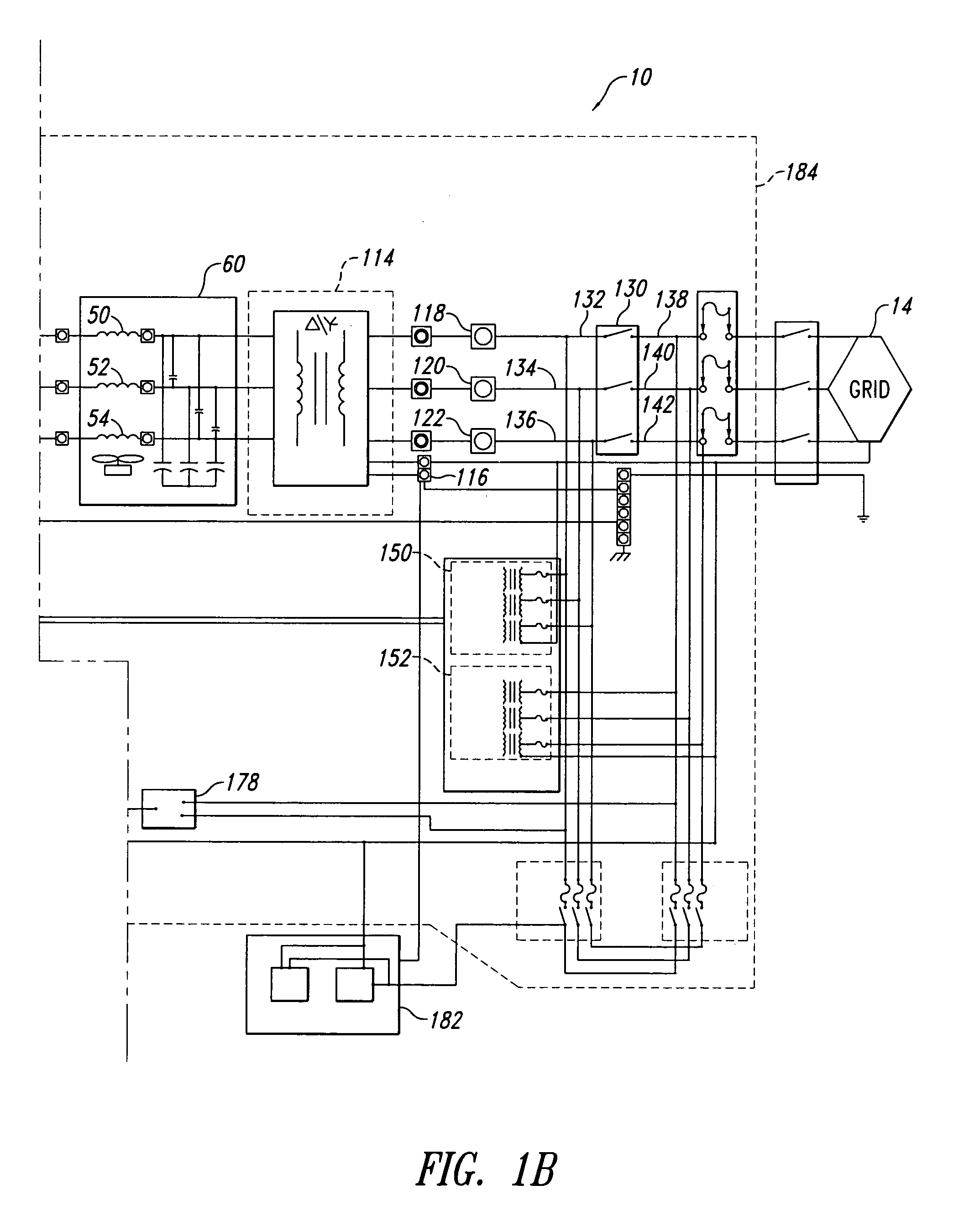Power converter system
a power converter and power technology, applied in the direction of motor/generator/converter stopper, electric generator control, dynamo-electric converter control, etc., can solve the problems of low cost of photovoltaic arrays, inability to control the power supply of power supply transformers, etc., to achieve the effect of preventing current flow
- Summary
- Abstract
- Description
- Claims
- Application Information
AI Technical Summary
Benefits of technology
Problems solved by technology
Method used
Image
Examples
Embodiment Construction
[0019]A power converter system employing the principles of the present disclosure is generally indicated at reference numeral 10 in FIG. 1 wherein reference numerals herein correspond to like-numbered elements in the various figures. In the following discussion, certain specific details are set forth in order to provide a thorough understanding of various embodiments of the invention. However, one of ordinary skill in the art will understand that the invention may be practiced without these details. In other instances, well-known structures associated with power converter systems have not been shown or described in order to avoid unnecessarily obscuring descriptions of embodiments of the invention, unless the context requires. Otherwise, throughout the specification and claims which follow, the word “comprise” and variations thereof, such as “comprises” and “comprising,” are to be construed in an open and inclusive sense, that is as “including, but not limited to.” Reference through...
PUM
 Login to View More
Login to View More Abstract
Description
Claims
Application Information
 Login to View More
Login to View More - R&D
- Intellectual Property
- Life Sciences
- Materials
- Tech Scout
- Unparalleled Data Quality
- Higher Quality Content
- 60% Fewer Hallucinations
Browse by: Latest US Patents, China's latest patents, Technical Efficacy Thesaurus, Application Domain, Technology Topic, Popular Technical Reports.
© 2025 PatSnap. All rights reserved.Legal|Privacy policy|Modern Slavery Act Transparency Statement|Sitemap|About US| Contact US: help@patsnap.com



